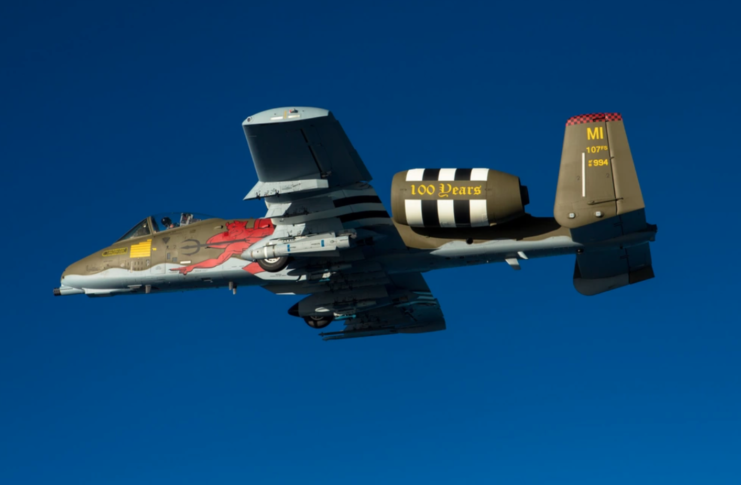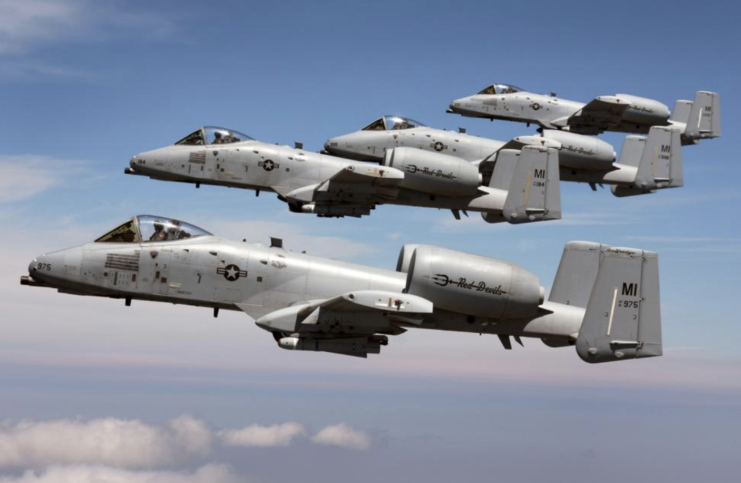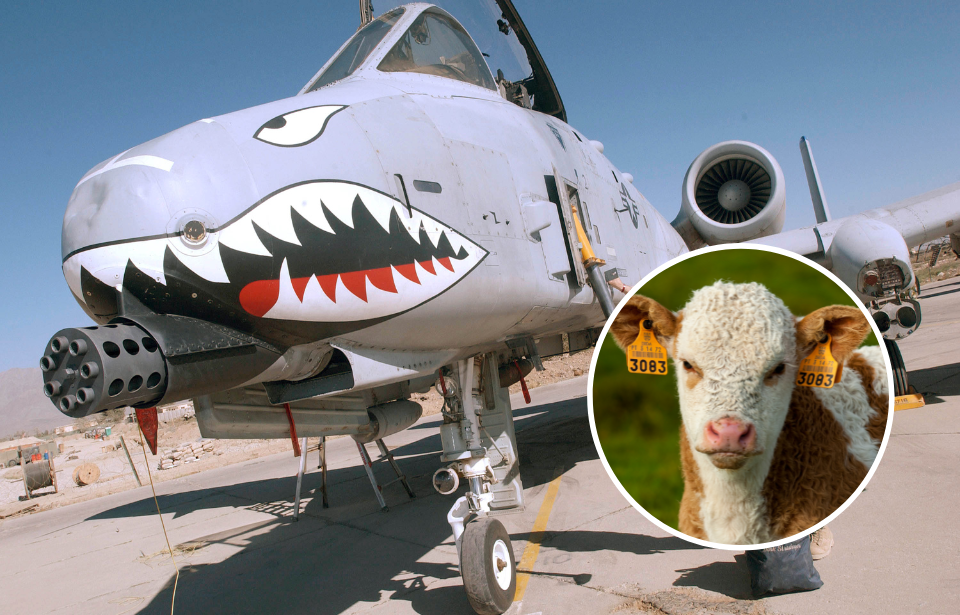Among the Fairchild Republic A-10 Thunderbolt IIs operated by the US Air Force, there’s one that stands out from the rest. The reason? Among its many kill markings is the outline of a cow. This particular aircraft was assigned to the Red Devils of the 107th Fighter Squadron, 127th Wing of the Michigan Air National Guard, and how it came to earn the cow kill marking remains unclear.
Why are there kill markings on A-10 Warthogs?

Placing kill markings on the side of A-10 Warthogs wasn’t always the norm. The practice only really started in 2017, when it was decided new paint jobs would be done on the 107th Fighter Squadron’s aircraft. They were painted green with devil characters to honor the 100th anniversary of the Red Devils, one of the oldest flying units in the Air Force.
In 2018, the specific A-10 with the cow kill marking could be seen flying during the commemorative flights over the beaches of Normandy, which were conducted in honor of the 74th anniversary of the D-Day landings that occurred on June 6, 1944.
Was the cow collateral damage?

The most commonly accepted rumor as to how this A-10 got its cow kill marking comes from a Close Air Support (CAS) mission.
It’s believed the pilot was performing a sortie over an enemy village in an undisclosed location in Iraq. Using the aircraft’s GAU-8/A Avenger 30 mm cannon, they attempted to blow away the enemy. However, when ground troops moved in to secure the area and conduct a kill count, they found a cow shredded to pieces by 30 mm ammo.
Penelope Carroll, spokeswoman for the 127th Wing, said the A-10 responsible had “inadvertently” killed the animal during the 107th Fighter Squadron’s deployment in Iraq. About 350 airmen and 12 of the attack aircraft from Selfridge Air National Guard Base, Michigan had been sent to the country and Syria as part of Operation Inherent Resolve in 2015.
While unable to disclose more details about the mission, Carroll did clarify that the cow kill was the result of ordnance, rather than the A-10s iconic “BRRRT” gun.
The cow kill isn’t the only strange marking on an A-10

The strange cow kill marking isn’t the only unexpected one to be present on an A-10 Warthog. There’s another that features markings of both a Lockheed Martin F-22 Raptor and a General Dynamics F-16 Fighting Falcon.
More from us: Pave Low: Converting Search and Rescue Helicopters for Use In Special Ops
The likely origin of these markings is that the attack aircraft belongs to the Air Command A-10 Demo Team. As such, it sports the marks of the F-16 and F-22, as they’re typically the types that fly in formation during airshows. As incredible as the A-10 is, it would likely be difficult for it to actually score hits against F-22s or F-16s.
